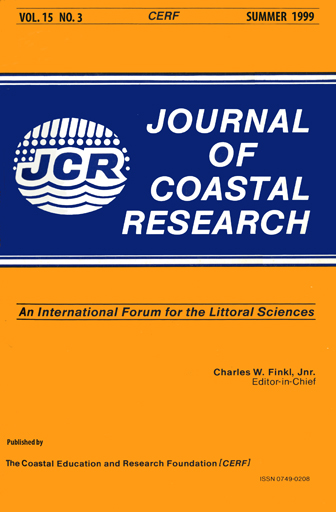Primary Production and Decomposition of Wetlands of the Rhone Delta, France: Interactive Impacts of Human Modifications and Relative Sea Level Rise
Keywords:
Wetlands, waterlogging, grazing, sea level rise, hypersalinity, Mediterranean.Abstract
Above ground primary production and above ground and below ground decomposition of several wetland species were studied in seven wetland sites in the Rhone delta from October 1992 to October 1993. The sites were located in three characteristic zones of the delta: a low salinity area close to the river mouth, a marine site near the Mediterranean Sea and managed, impounded areas. These areas are vegetated by helopytes and glassworts (family Chenopodiaceae). Wetland production was affected by salinity, cattle and horse grazing and water levels. In a grazed freshwater wetland dominated by Scirpus maritimus, production was 452 g m -2 yr-1, while in an adjacent ungrazed site dominated by Typha angustifolia production was 2989 g m -2 yr-1. The most productive glasswort marshes were dominated by Arthrocnemum fruticosum, one near the river mouth (1123 g m-2 yr-1), and a second with a free connection to the sea (1262 g m -2 yr-1). The least productive glasswort marshes were dominated by Arthrocnemum glaucum. The lowest production (244 g m- 2 yr-1) was in a grazed, semi-impounded marsh with high soil salinity and high ground water levels, while a second area in the central part of the delta with high soil salinity and grazing had a production of 294 g m -2 yr-1. In the non-grazed brackish Phragmites australis-Scirpus maritimus marsh at the river mouth, production was 824 g m -2yr -1 whereas in an unprotected site nearby, grazing was so intense that above ground vegetation was eliminated. Decomposition rates were significantly different among species and plant parts but not among sites when the same species were used. Root decomposition was not significantly different with depth. Shoots had the highest decomposition rates with mean K values of 0.033 wk -1 for Arthrocnemum fruticosum, 0.024 wk -1 for Phragmites australis and 0.019 wk -1 for Typha angustifolia. Root decomposition had mean K values of 0.0042 wk -1 for Arthrocnemum fruticosum, 0.021 wk -1 for Phragmites australis and 0.038 wk -1 for Typha angustifolia. The decomposition rate of woody stems of Arthrocnemum glaucum had a mean K value of 0.0037 wk -1. The main factors affecting primary production are grazing, soil salinity, waterlogging and nutrients. Human impacts such river and sea dikes, impoundments, and introduction of large grazers have altered productivity, diversity and successional patterns of the vegetation communities. Increases in sea level will exacerbate these impacts because of increased waterlogging and salt stress. These impacts are presently leading to wetland loss and this will likely accelerate unless conditions are changed.Downloads
Published
1999-07-09
Issue
Section
Articles


